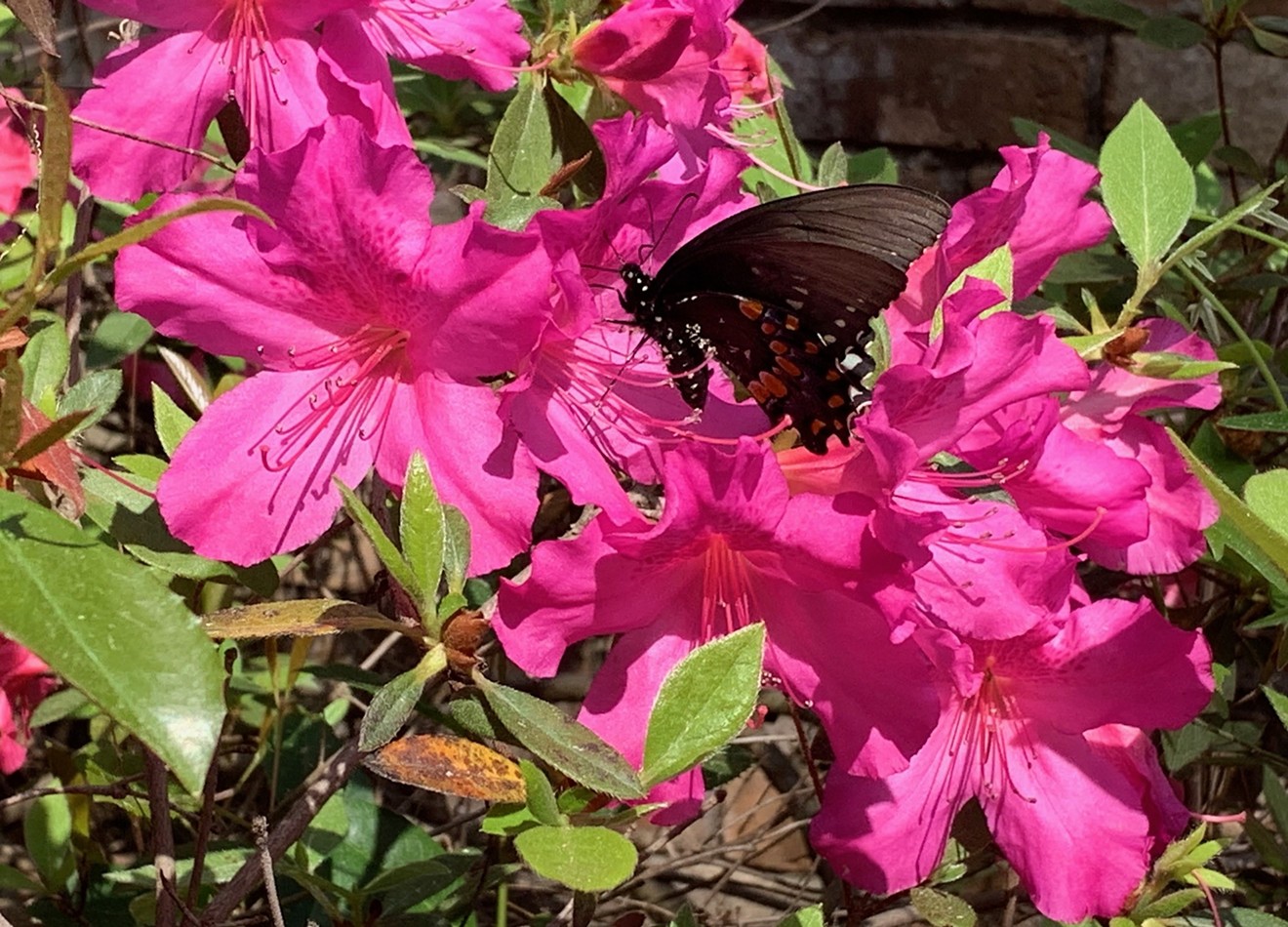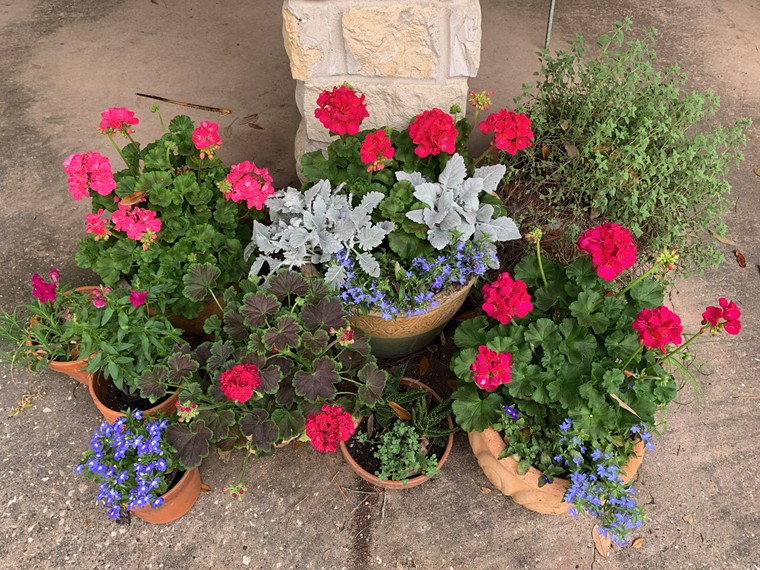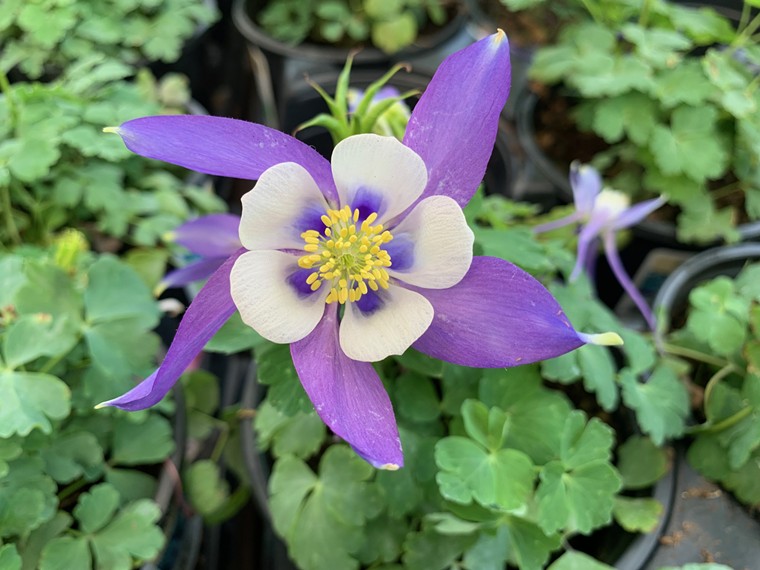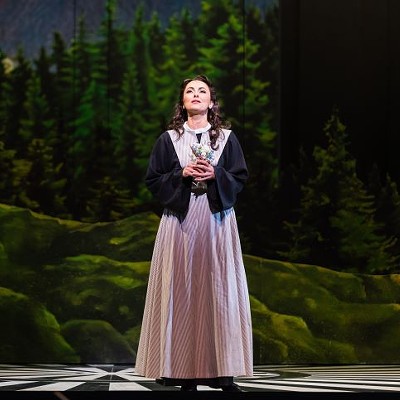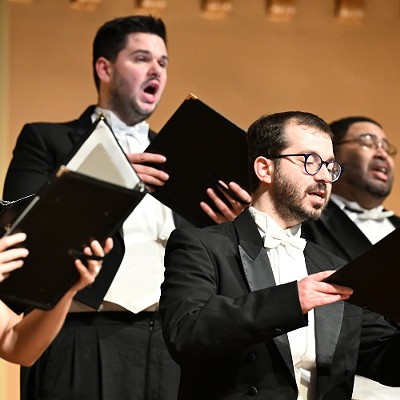The month of March in Houston can be a crapshoot weather-wise but so far, we've been pretty lucky. Though we could use a little rain, the temperatures have been pleasant and there have been some mornings where I have found myself singing John Denver's "Sunshine" because it's been so beautiful.
But we cannot tarry when it comes to gardening. While a fairly nice February gave some of us a chance to get tomatoes in early and plant a few shrubs and flowers, March is the month where the garden dreams and plans of winter must now be executed before the heat and humidity return in full force.
We have some tips on what to plant this month and we've reached out to a couple of experts for advice. However, gardening is a very personal thing, just like home decorating. It can take some trial and error before our little gardens look like the paradises we dream of rather than a conglomeration of big box store plants and ragged survivors of previous freezes. The most important thing is to plant what makes you happy. It's your Eden and you are the creator.
Budget:
Let's get this fun topic out of the way first. Gardening is a relatively inexpensive hobby compared to some but it can be pricey for those who need instant gratification. A brand new garden needs structure while an established one needs refreshing. Take stock of what you have before coming home with more plants than you can get into the ground.
While some people have brand new clothes hanging in their closets waiting for the magical 10 pounds to come off, some gardeners are guilty of buying pretty plants without a predetermined spot to place them. Our eyes are too big for our wallets. And sometimes, we just don't have the time, or inclination, to plant all of the things we have purchased. We put it off while the poor plants languish in their original nursery pots. A flat of unplanted annuals is money down the drain.
I would love to say I never do this but my husband would set the record straight on that. I am getting better, though. I refuse to buy another rose without digging a hole before I even think of going to the nursery.
The garden centers are packed to the hilt right now with gorgeous flowers and shrubs. This is their money-making season and they will squeeze out every penny they can from desperate homeowners with English garden ideas or tropical paradise fantasies.
And, boy, are we spending. After a hectic Friday trip to my local nursery, I decided I would return on a Monday, hoping it would be less crazy. It was even worse. The tomato section looked like a fire sale. Mystic Spires salvia was sold out. Again. I left with some pepper plants and a few half-price delphiniums and dianthus.
There were some clearance sales at both the locally-owned garden centers and the big box stores. And these can be great if the plants still look good or might be able to stretch out the season. However, I saw a number of nearly dead pansies for half price. Half-dead plants near the end of their season are not a smart buy, no matter how cheap.
I also check the floral departments at grocery stores. They don't always move plants as quickly as they need to so they often have marked-down deals. I have purchased kalanchoes, bromeliads, hydrangeas, begonias and a number of succulents for half price or even less. Most often they are houseplants but some purchases I have successfully integrated into patio plantings.
If you have gardening buddies, see what they have to spare. I had to divide an aloe vera plant so I potted up a nice-sized piece for my friend. I also sowed some basil seeds we got on a wine country road trip to give to her. She'll remember how much fun we had while noshing on some homemade pesto.
Cuttings are a simple way to propagate many plants and I often take pieces that have accidentally broken off and set them in some water or really wet soil to see if they root. While many horticulturalists would recommend rooting hormone powder for success, I simply just take a chance. If it works, great. If not, oh well.
As the weather warms up, many of our plants are coming back from the roots. Give them time. It may take a while for them to look good again and they may or may not bloom this season. My blue plumbago is coming back but it probably won't bloom until late summer or early fall.
Flowers for March:
There is a dizzying array of blooms right now to go into flower beds and containers. Big, bold geraniums will give instant color and last for months, even into winter. They can get leggy as time goes on. I don't bother pruning mine back but a number of plants like petunias, do prefer some pinching back.
Speaking of petunias, there are some fabulous upright ones for edging flower beds or Wave petunias for hanging baskets. I find that the light purple ones often have a scent compared to other petunias. While begonias seem like a throwback to the '80s, I have included some wax begonias in a partially shaded spot in my garden as well as some specimens like Dragon Wing or Angel Wing varieties in pots.
Salvia is another popular Houston plant because many types can bloom from spring to fall. It's the largest genus in the sage family (Wikipedia), so there's a plethora from which to choose. My friend likes the annual bedding types, I prefer the Mealycup sages like Victoria Blue or the hybrid Mystic Spires. I used to pass them by but once I planted them with my roses, I realized what a garden workhorse they are. They are a tender perennial here in Houston so they almost always come back from the roots. I have some that are several years old. Most 4-inch pots of sage are inexpensive so it's a plant that gives a great return on its investment.
For those of us who drool at the thought of an English cottage garden, there are transplants that can sate that desire, though it will probably be only for one season. I planted some Connecticut Yankee and Bellamosum delphinium types this past winter that are just now starting to bloom. The foxgloves I planted should flower this year. These will peter out with the lobelia and snapdragons when it gets hot. Still, for those who need just a little piece of English countryside, a few splurges on columbines and scabiosas for a short spell can be worth it.
And make sure to keep potted flowers well-watered. They dry out very quickly in Houston's heat.
Summer Tropicals:
On the flip side of the cottage garden lovers are the Jimmy Buffets of the plant world. They want to dream of pina coladas and ocean breezes. And Houston, until recently, has been a tropical plant lover's fantasy. Hibiscus used to bloom in nearly every suburban garden and the mass of oleanders lining the causeway to Galveston was stunning.
But the past few years have brought some climate changes. Along with some exceptional droughts, there have been unprecedented freezes. Still, Houston's humidity and heat can be conducive to growing a number of tropicals. It's best to keep many of them in pots to bring in during winter cold snaps.
I lost two mandevillas that bloomed beautifully last year. They were seven years old and I had done the moving in and out so many times that I decided to just let them tough it out this winter. They keeled over. Dipladenia is a non-climbing tropical that looks like mandevilla and is available everywhere right now, as are varieties of Cordyline which makes a nice accent plant in pots or beds.
Shade:
Everyone knows impatiens and begonias are great shade plants though they seem to have fallen out of favor. Impatiens make a great planting around trees. My friend really likes a certain bronze-colored heuchera which does well in partial shade and there are numerous foliage colors in that genus. It is often called Coral Bells because some varieties put up a flower stem with small bell-shaped flowers. They are native to North America and attract hummingbirds.
Many shade gardeners plant hostas which is something I have never tried. Coleus can provide colorful foliage in shade and many azaleas and camellias enjoy dappled sun or partial shade.
Summer Bulbs:
Bulbs for summer blooms should be planted now, just be prepared to gulp at the prices. However, most will return year after year. Gladiolas are usually the least expensive and they are very reliable but they will need staking. Asiatic lilies like daylilies are also perennial but I think their bloom time is too short for my taste.
Caladium bulbs can be planted now for shady, woodland areas. For those loving big, blowsy blooms, dahlias will delight with their bright colors. They are expensive, usually $5 per tuber. Some growers recommend planting dahlia tubers in early fall for Houston but they rarely are available then. To help them deal with Texas heat, it's a good idea to give them afternoon shade.
Trees and Shrubs:
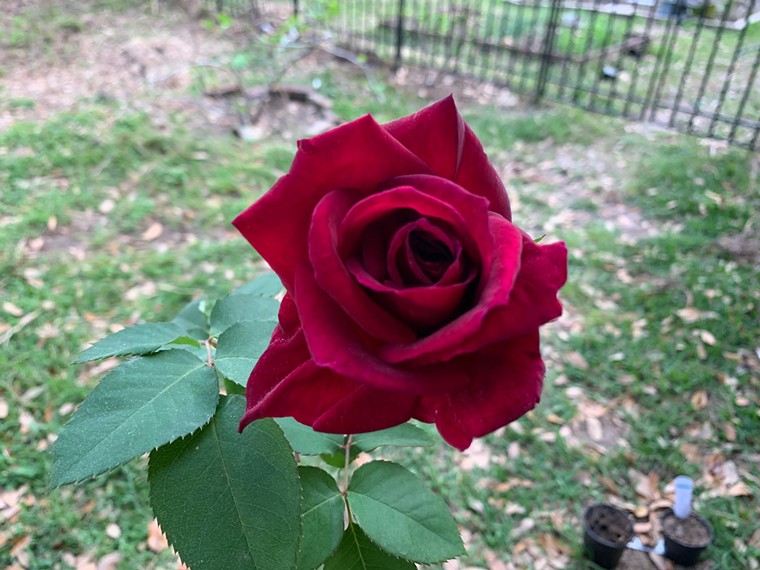
Mirandy is a dark red hybrid rose that has the strong damask scent of an old fashioned type.
Photo by Lorretta Ruggiero
There are still bare root roses available for planting but they are starting to show distress. Rose lovers may have to dish out the big bucks for container-grown specimens.
Edibles:
For those dreaming of picking oranges and peaches off their own trees, there's no time to waste. Personally, I am giving up on citrus. If there's an apocalypse, my family is going to have scurvy because I have very little success. Lots of blooms, little fruit. However, I'm not trying to dissuade anyone from growing their own limes and lemons. Just be aware that the 40 bucks you spend on a citrus tree will probably not be coming back to you in edible fruit. For those south of Houston, there's a much better chance of getting a harvest of juicy oranges. For those who will not be deterred, Meyer Lemon Improved and Satsuma are a good start.
I have one awesome peach tree and one that hasn't bloomed in four years. The pretty pink blooms and juicy fruit of a peach tree makes it worth growing. In Houston, we need varieties with low chill hours. The January hard freeze this year seemed to be a boon for one of my trees.
Houstonians can grow blueberries if they provide them an acid soil. Most need to be bought in pairs for pollination but there are self-pollinated varieties available such as Sunshine Blue and Pink Lemonade. Thornless cultivated blackberries are much easier and come in an array of harvest times. For those who want to eat blackberries from late spring through mid-summer, it can be done with wise planting of varieties such as Navajo, Arapaho and Natchez. Strawberries are very popular and I have a few from last year that are putting out berries. However, the pill bugs, birds and snails love them, so a hanging basket of strawberries is a good idea.
March is also the last month to plant tomato transplants in Houston. Some of us chanced it and planted tomatoes in late February. I was one of those folks but my plants aren't looking too happy. I have a couple more varieties that I am planting this week. My cherry types this year are Sweet Chelsea, Sun Gold and Yellow Pear. While Yellow Pear is not as tomato-ey (it's a word) as I normally like, it never ceases to provide pints worth of pretty fruit. It's a great choice for introducing children to gardening.
I couldn't find my go-to favorite Black Cherry, so I am trying Indigo Blue Berries, a cherry type that produces small blue-black fruit. For paste tomatoes, I have Roma and San Marzano, along with Cherokee Purple and Bella Rosa for slicers.
Many standard hybrids are disease-resistant. Popular American choices include Early Girl, Beefmaster, Big Boy, Champion and Better Bush.
Beans, summer squash and cucumbers can be sown from seed right now. Make sure to stagger bean plantings to get a continuous crop. Cucumbers comes in so many types, so growing from seeds can be an adventure. Make sure to keep the planting soil moist to aid in germination.
Pepper transplants provide gardeners with a world of colors, heat levels and sweetness. And they produce over a long period. I am growing Bulgarian Carrot, Sweet Heat, Cayenne, El Jefe jalapeno and Ancho San Luis. it's going to be spicy at the Ruggiero household.
Fertilizing:
Nutrients are very important when it comes to growing plants and that means beginning with the right soil. And that can be tricky. Some plants will grow in just about any soil while others have different requirements for pH levels and nutrients. That is way too much for this non-botanist to cover. However, the internet is your friend when it comes to researching a new plant's needs or getting advice for revitalizing an old favorite.
I do not consider myself a lazy gardener but I am an impatient one. Trying to do math with soil is beyond my capacity. I just add compost and occasionally manure to my beds before planting and wait a while. Then, I use a bagged planting mix or potting soil when putting in transplants and I occasionally fertilize with an organic all-purpose fertilizer. My gardening hero, Monty Don, the British horticulturalist and BBC gardening host, seems to always be feeding everything with liquid seaweed. The experts at Cornelius Nursery recommend its Premium Flower Food that is a slow release granular that only needs to be applied every 30 days.
Jennifer Hatalski, VP of Marketing at Cornelius, suggests that gardeners apply a layer of mulch. "Mulching your flower beds and around your trees and shrubs does more than complete the look of your garden, it helps retain soil moisture, decreases weed development, reduces erosion and adds beneficial organic matter that plants need to thrive."
Enjoy:
Once all the hard work is done, it's time to sit back and take pleasure in your plot of happiness, be it a collection of potted herbs and flowers or a backyard teeming with birds and butterflies. Of course, you may find yourself hopping up every now and again to prune a dead branch or tie up a drooping stem.
A gardener's work is never done. Especially in March.

